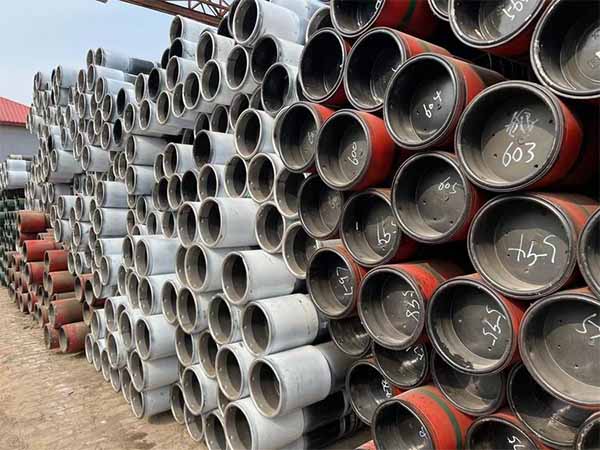Oil casing pipe is a key component in oil and gas well construction. It primarily supports the wellbore, prevents wellbore collapse, isolates different geological layers, and ensures stability during drilling and long-term safe operation of the well after completion. Unlike reusable drill pipe and tubing, casing is a disposable material and a major consumable product in oil wells.

Why are oil casing pipes so important?
During drilling operations, the formation may become unstable, and fluids, pressure, or gas may leak into the wellbore. Oil casing pipe addresses these challenges in the following ways:
Support the wellbore and prevent it from collapsing.
Isolate high-pressure layers, gas-bearing layers, and aquifers.
Connecting subsequent oil pipe installation
Ensure the long-term integrity of oil and gas wells
Without proper casing, oil wells cannot be safely completed or produced.
Types and layered structures of casing
Oil casing pipe can be classified into four categories according to its function and running depth:
1. Conduit: The conduit is the first and shallowest casing (usually <100 meters) installed at the top of the well. Its diameter is usually (20”-30”) and it is driven into or drilled into the surface before formal drilling.
The main functions include:
Stabilizes the loose upper strata, such as sand, gravel, soft soil, or weathered rock.
To prevent corrosion and collapse of the upper wellbore during drilling.
Guide the surface drilling tools to maintain a stable entry point into the well.
Provides a structural foundation for offshore drilling blowout preventers.
2. Surface casing: Surface casing is installed after drilling through the upper loose formation and reaching a more stable geological layer, providing basic protection for subsequent drilling.
The main functions include:
Isolate freshwater aquifers to prevent drilling fluid contamination.
Provide pressure control for shallow formations with uncertain or low pressure.
Anchor the blowout preventer to ensure drilling safety.
Prevent leakage and stabilize the loose layer.
3. Intermediate casing: Located between the surface casing and the production casing, intermediate casing is used when the well enters deeper and more complex formations. It is the most flexible and versatile casing string in wellbore design.
Its main functions include isolating abnormal pressure zones, high-pressure formations, and rock strata to prevent wellbore collapse and drilling fluid loss.
4. Production casing: The production casing is the last casing string installed after the well reaches the target depth. It directly affects production performance, safety, and well life.
The main functions include:
Provides a permanent barrier between the reservoir and the external formation.
The installation of tubing, packers, and completion tools is permitted.
To prevent fluid migration between strata during the production process.
It can be exposed to high pressure, high temperature, CO₂ or H₂S environment for a long time.
Commonly used specifications and steel grades
Oil well casing conforms to API 5CT or ISO 11960 standards.
Common API Levels
J55 / K55 – Low-pressure well
N80 / L80 – Medium-deep wells
C90 / T95 – Acidic environment
P110 / Q125 – Deep and High-Pressure Wells
Typical connection method
API LTC (Long Thread)
STC (Short Thread)
BTC (Connecting Thread)
Key processes of casing lowering and cementing
1. Segmented lowering: The single casing (usually 9-12 meters in length) is lowered to the design depth by connecting the segments one by one using the drilling rig. The segments are screwed together with API standard threads (such as STC/LTC) or special threads (VAM) to control the torque.
2. Cementing: After the casing is in place, cement slurry is injected into the annulus outside the casing to form a sealing barrier. There are two types of methods: "single-stage cementing" and"double-plug cementing"(first, a bottom plug is injected to isolate the mud, and then cement is injected to replace it).
Key technical requirements include:
Cement reinforcement needs to cover key geological formations (such as freshwater layers).
Sonic logging is used to inspect the quality of cement bonding.
To prevent micro-gaps from forming due to cement solidification shrinkage.
3. Install wellhead equipment: After cementing, install the casing head to bear the weight of the subsequent casing string, seal the annular pressure, and provide a connection interface for the blowout preventer.
Summarize
Oil well casing is a fundamental product of Oilfield Casing Tubing (OCTG) and is crucial for constructing safe, stable, and efficient oil and gas wells. Casing plays a vital role throughout the well's lifecycle by supporting the wellbore, isolating the formation, and ensuring pressure integrity. Understanding casing types, grades, and applications helps operators select the appropriate casing solution for their projects.